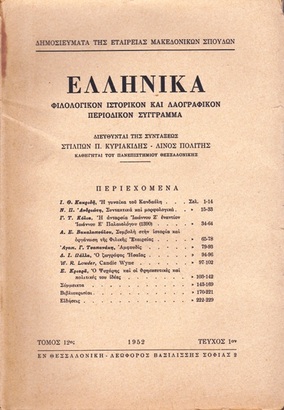Η ρίμα ως τεκμήριο ύφους στον Ερωτόκριτο σε σχέση με άλλα έργα της κρητικής αναγέννησης
Part of : Ελληνικά : φιλολογικό, ιστορικό και λαογραφικό περιοδικό σύγγραμμα ; Vol.48, No.1, 1998, pages 47-59
Issue:
Pages:
47-59
Parallel Title:
Rhyme as a feature of style in the Erotokritos in comparison with other literary works of the Cretan Renaissance
Author:
Abstract:
Recent studies have demonstrated that rhyme can be considered a significant element of style in dramatic works of the Cretan Renaissance. The present article seeks to add new observations based on initial examination of the rhyme of the period's masterpiece, Erotokritos, occasioned by the publication of a new book containing a concordance and other word-tables (Dia Philippides - David Holton, with the technical collaboration of John Dawson, 1996-98). The new book on the Erotokritos is modelled to a large extent on a similar handbook produced a decade ago (Philippides, 1986) for the contemporary play, The Sacrifice of Abraham, often posited to be the work of the same author. The Erotokritos, however, is more complex in its structure than the drama (ca. ten times as long, divided into five books of diverse subject matter [love, war], comprised of an interchange of narrative and dialogue). The additional complexity should be taken into account when studying the rhyme of the romance, or comparing the rhyme of the two works. Comparative examination of the most frequent sounds, words and rhyming pairs found in the rhyme of Erotokritos and The Sacrifice of Abraham suggests that the choice of rhyme words is motivated by the content (subject matter). Thus, for example, with regards to their most frequent rhyme words, the five books of the romance show behavior similar to one another, and a difference from the drama. Prior study of the morphology of the rhyme had indicated that the choice of rhymes is influenced by literary genre —Erotokritos having a hybrid nature, alternating between narrative and dialogue. It is clear that further study is needed, juxtaposing the narrative and the dialogue parts of the romance and the dialogue of other contemporary dramas. The new word-tables provide the basis for such study and the beginning of a databank for the literature of the period.
Subject:
Subject (LC):




